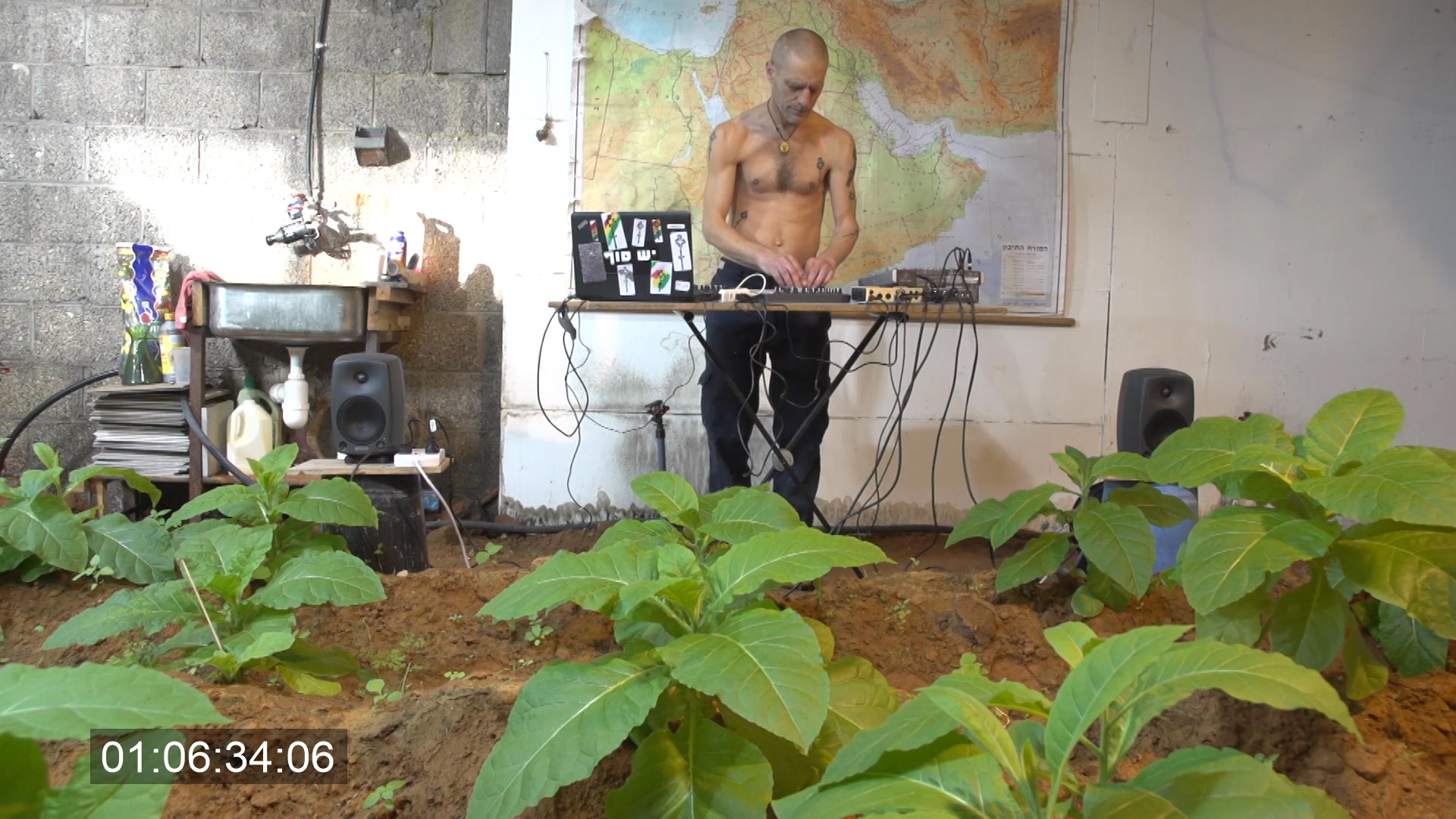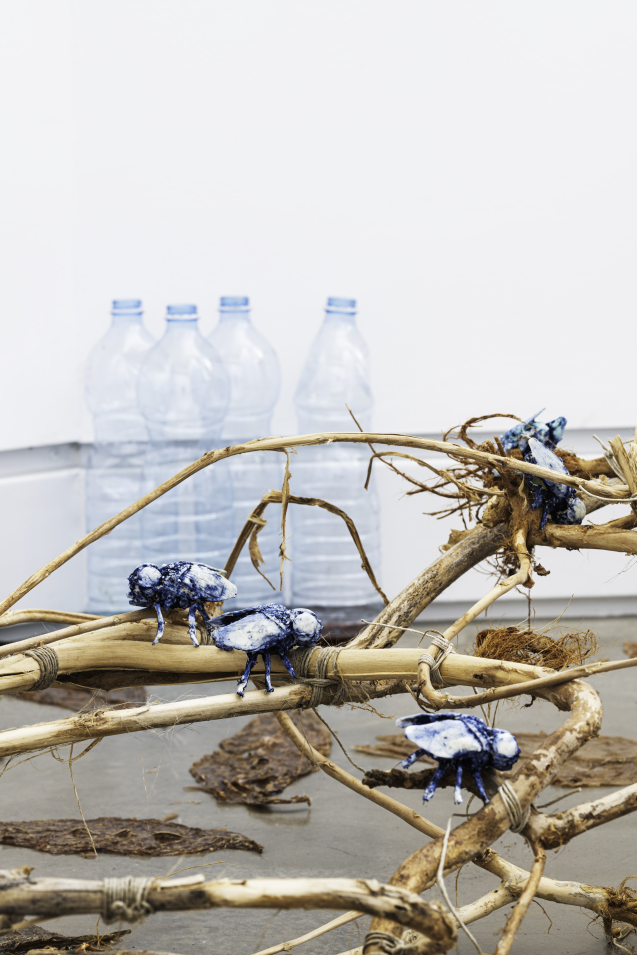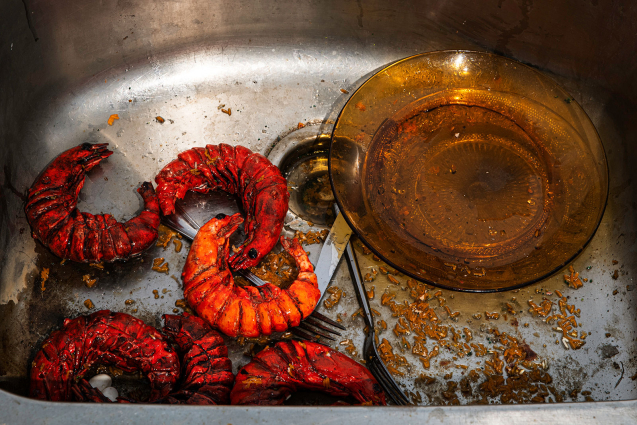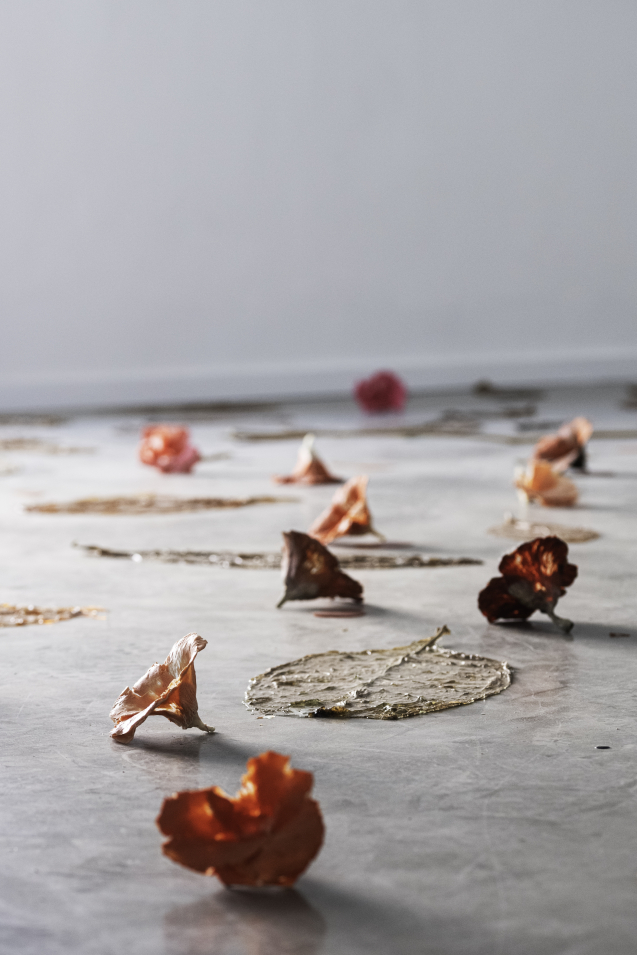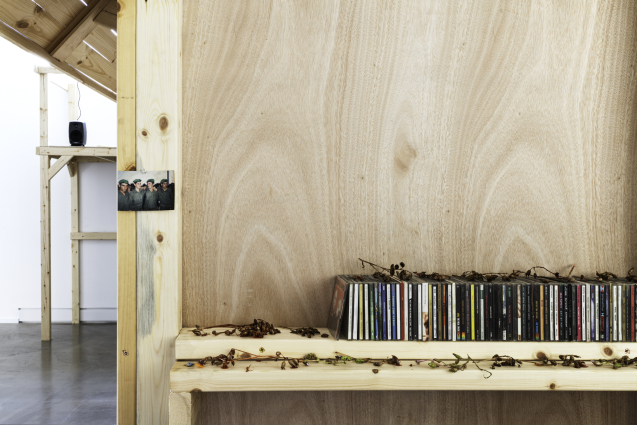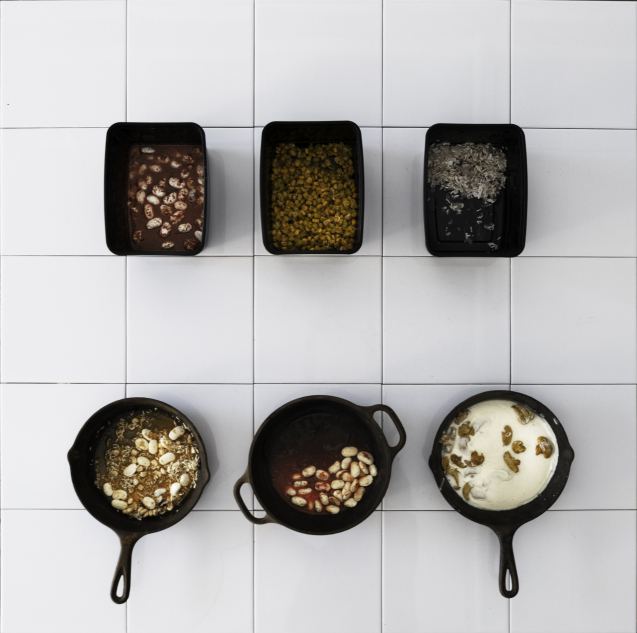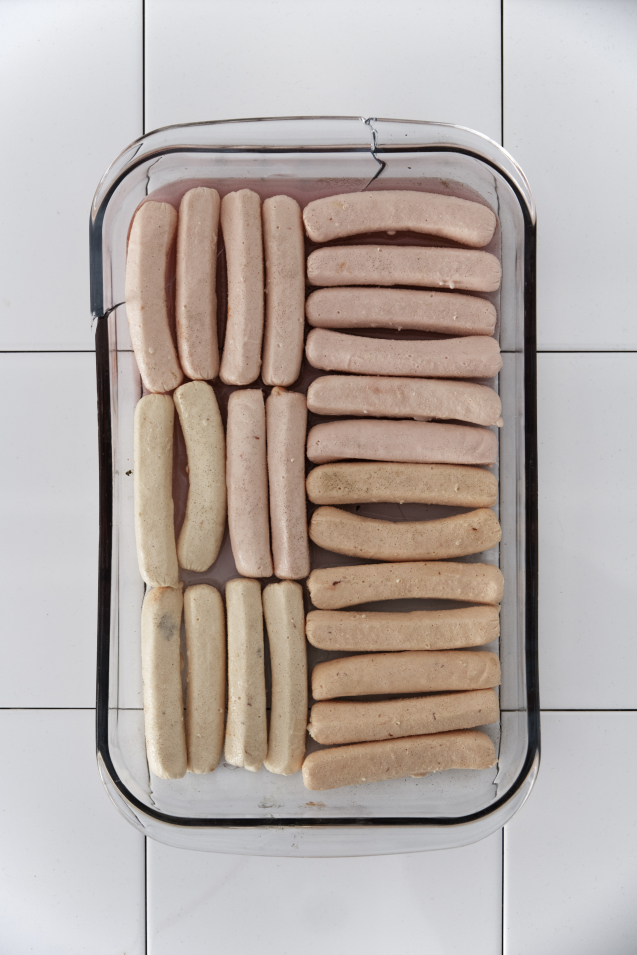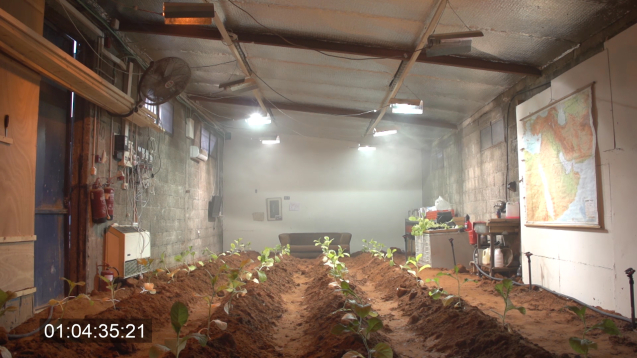The starting point for the exhibition is the tobacco field you planted in your studio, in the old Artport complex. But the real starting point is a different tobacco field, in the United States, many years ago.
I was discharged from the Israeli Army in 2000, after an intensive service experience. I was drafted in 1997, just after the Oslo Accords fell apart, and at that point, Jerusalem, where I grew up, was saturated with terrorist attacks. After three years in the army feeling paralyzed, fraught with questions and baggage, and trying to figure out who you are and what you are, my friends and I took off to New York. Our plan was to travel – like many other people do after their army service. The idea was to be in New York and at some point, to travel through the United States and then finally make it to Jamaica. But we ended up staying in New York for a few months.
What did you do there?
I drew sketches for tattoos and sold them to tattoo parlors. I made notebooks with paintings for people to choose from. I thought being in New York was right for me. But then 9/11 happened.
I was also living in New York at the time. It was a bit like having an Israeli experience in a foreign land.
The types of terror had a similar resonance between the Intifada and 9/11, but they were also very different – this was not our terrorist attack. The following days felt like after Rabin’s assassination, everyone sat in the square and played music with candles. And there was a terrible burning smell in the air. The city started to die financially because no one was eating out or spending money and Rudy Giuliani, who was mayor at the time, created a lot of free cultural events – there were three weeks when I mainly went out to the movies in the morning and to see shows in the evening. But after two or three weeks we couldn’t stand the city anymore.
It was a very difficult time. A lot of police on the streets and worrying about everything.
There was a lot of stress, there was nationalist frenzy and flags everywhere. I found myself doing sketches for “I Love NYPD” tattoos. My two friends and I from Jerusalem realized that we needed to get out of the city. We bought a car and thought we’d find our way south, sell the car on the Mexican border and move on.
This is like an actual scene from a movie – a coming of age journey of the boys from Jerusalem, going on a road trip across the United States.
Pretty soon I realized that all this hiking in the woods and meeting new people was not for me. I decided to go back to New York despite all the chaos. I dropped them off near Miami and started driving back across the United States. It was about a week and a half drive, wherever I stopped there was a motel to sleep in and a burger to eat. I drove and drove, until one night I drove into a huge tobacco field. I found myself driving for hundreds of miles with nowhere to stop, no motel, nothing. I was surrounded for hours by these tobacco plants that are both beautiful and toxic, and this drive was very meaningful to me. Throughout it, I realized that I wanted to go back to Israel. I arrived in New York and sold the car. I went to El Al’s Manhattan branch and bought a ticket.
In fact, when you returned to Israel, you also realized that you wanted to make art, and you started working with the two men who star in the film.
I found myself close to two people. First was Benny Oren, who I started a music label with, there was a shared musical explosion going on. And Yuval Rimon, who I met while working at Hazira Performance Art Arena and he brought me to Zik, a Jerusalem performance group. My identity as an adult started between the two of them. The project is also a tribute to them and to their place in my life. In the film, each does what he does in life – Benny plays, Yuval builds things and films, things that I learned from them.
You just turned 40. Benny is 8 years older than you, and Yuval is 23 years older. In the film you walk around shirtless, a little older, a little graying. You could say that the coming of age movie became a film about midlife crisis.
More than I see this as a film about a crisis, I see in the film three middle-aged Israeli men who are each damaged in some way by their time here. Broken and hiding in their masculinity.
It’s a place we all know very well. That’s where we come from. I feel that even in the Jerusalem music scene, as well as in the Zik group, which is almost an art commune, there is something reminiscent of the military reserve experience – men who spend a lot of time together, who do things to forget.
Did you know from the start that the three of you were going to be part of the story of the field?
I played with the image of the field in my head for a long time. At first, I thought I would go to a remote field and shoot a video there with Benny and Yuval, and then I tried to figure out how to produce and control this image, and it remained part of my practice.
Another motivation I had for the film involved the studio itself and the animals that also lived there – cats, mice, spiders, birds, insects, frogs, bats. I thought about taking photos of them, and then I figured that if they walked around the studio anyway, perhaps I could create a place where they could flourish and live. I thought about how I could create my own weather for them, light and sun, a system that simulates the outdoors inside.
I was also interested in creating a piece where I grow the raw materials from scratch. Where I control the DNA of the materials that comprise the work.
You also built the rest of the exhibition from the scratch – mixing and molding materials to produce the army food that welcomes the visitors who enter the space. In fact, the kitchen is located where the kitchen of the startup that used to be here before we moved in used to be. You even use parts of the kitchen they dismantled and left behind.
The kitchen was born the day we saw the kitchen on the tour of the building. There is an internal loop here – with the previous location and the new location. Without Artport, the field would not have happened, but the site of the field as well as Artport was destroyed. This is starting over but based on what was there before.
The food in the kitchen in the show is nauseating. Food that turns you off.
This food is what we ate. The generation before us grew up on unprocessed food, the generation after us was already aware of what went into their food. We are the generation whose food was in the worst shape. Remember Miss Lucy? You would buy a frozen hotdog in a bun with ketchup and heat everything together. Food is a metaphor for our local and existential state, for the gap between how we think of ourselves and where we really are. You don’t feel like you are living in the middle of nowhere when you live on Levontin, eating pizza with mushrooms from a can.
The food in the kitchen ranges from the military corn salad to the pretentious shrimp. We currently live on the leftovers, even the art world. The feeling is that the party is over. The shrimp is back in the kitchen with all the dirty dishes.
The kitchen looks unwell, like the field that became very sick. You leave both of them deserted.
The tobacco field was infected by mealybugs and I had to decide what to do with it. The demolition of the complex was imminent and it was clear it was dying. So when my field needed the most care, I turned off the light and water and let it die. I had to decide which avenue to take – death or nature.
In fact, the whole film, and the exhibition, are a preparation for death.
Life is a preparation for death.
Read more


